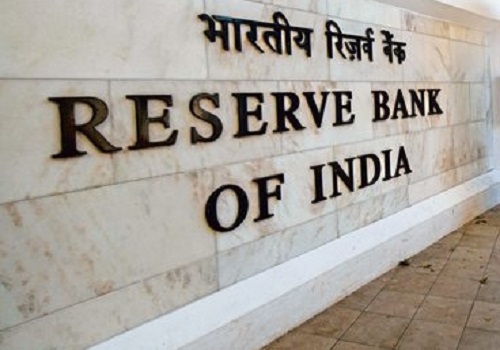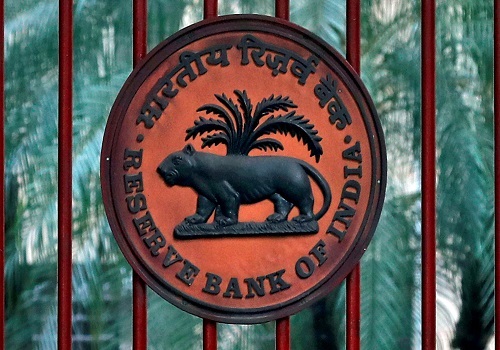CPI surges to 4-month high; IIP contracts 3.6% - ICICI Securities

Follow us Now on Telegram ! Get daily 10 - 12 important updates on Business, Finance and Investment. Join our Telegram Channel
https://t.me/InvestmentGuruIndiacom
Download Telegram App before Joining the Channel
CPI surges to 4-month high; IIP contracts 3.6%
* Headline inflation surges to 4-month high: CPI inflation surged to 4-month high of 5.5% in Mar 2021 (I-Sec estimate: 5.2%; consensus: 5.4%). Headline inflation stood at 5% in Feb 2021 and 5.8% twelve months ago. With this print, average inflation in Q4FY21 stands at 4.9% and full year average in FY22 stands at 6.2%.
* Large part of sequential increase due to base effect: While retail inflation has increased by 50bps between Mar and Feb 2021, a large part of the sequential increase is due to unfavourable base effect. Out of the 50bps, our calculation shows that base effect contributed 34bps while month-on-month momentum contributed only 13bps. The base effect is turning favourable in April 2021 and with the sole exception of May, it is likely to remain favourable till November 2021. Hence, base effect is likely to keep a lid on inflation in the coming months.
* Higher services inflation drives year-on-year increase in inflation: Out of the six major components of inflation, two components viz. ‘food and beverages’ and ‘fuel and light’ recorded falling inflation between Mar 2021 and Mar 2020. These two components along with housing subtracted 135bps from headline inflation. However, services inflation recorded sharp year-on-year increase: it came in at almost 2% in Mar 2021 from 1.3% in Mar 2020. Anecdotal information confirms this: as service providers operate with lower staff and higher maintenance expenses (including adhering to Covid-appropriate protocols), many of them have started charging convenience fees, leading to higher services inflation. Since the service sector is more contact-intensive than manufacturing, the pandemic has hit the former much more severely, both in terms of activity and prices. Apart from services, two other components viz. ‘pan, tobacco and intoxicants’ and ‘clothing and footwear’ also recorded moderately higher year-on-year inflation in Mar 2021. These two components along with services added ~95bps to headline inflation.
* Five food items record double-digit inflation in Mar 2021: Food inflation fell to 5.2% in Mar 2021 from 7.8% twelve months ago. Six food components viz. ‘meat & fish’, eggs, ‘oils & fats’, fruits, ‘non-alcoholic beverages’ and ‘prepared meals’ recorded sharp surge in inflation, collectively adding 280bps to food inflation. Mar 2021 marks the fourth consecutive month when ‘oils and fat’ inflation has remained above 20% y/y and during FY21 edible oil inflation has averaged 16%. On the other hand, cereals, milk, vegetables, pulses, sugar and spices recorded lower inflation subtracting 540bps collectively.
* Services inflation remains elevated; core at 6%: Services inflation came in at 6.9% in Mar 2021, up from 6.8% in Feb and 4.4% in Mar 2020. Since the onset of Covid19 pandemic, services inflation has remained sticky at around 7% and averaged 6.6% in FY21. During Mar 2021, the largest contributors to services inflation were transportation and healthcare. Core inflation jumped to 6% in Mar 2021 from 4% twelve months ago, again driven by sharp surge in transportation, clothing & footwear and healthcare inflation.
* IIP contracts 3.6% in Feb 2021: IIP contracted 3.6% in Feb 2021, on top of a 0.9% contraction in Jan 2021 and 5.2% growth Feb 2020. The contraction in IIP was expected given the weak performance by core sector production. Index heavyweight manufacturing contracted 3.7% in Feb 2021 from 3.8% growth twelve months ago. Mining and electricity also recorded lacklustre performance. Within manufacturing, biggest drag on growth came from metals, petroleum, and machinery manufacturing.
* From use-based perspective, primary and intermediary goods drag growth: From the use-based perspective, the biggest drag on growth came from intermediate goods and primary goods production, which together subtracted 950bps. Consumer durables production, on the other hand, provided support to growth by adding 160bps.
To Read Complete Report & Disclaimer Click Here
For More ICICI Securities Disclaimer https://www.icicisecurities.com/AboutUs.aspx?About=7
Above views are of the author and not of the website kindly read disclaimer























